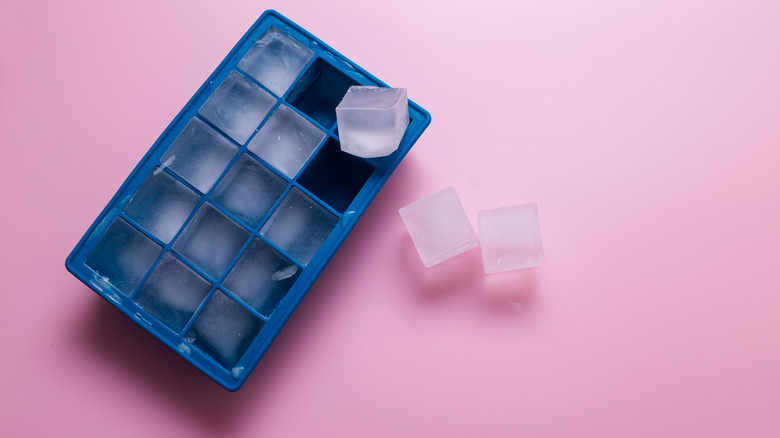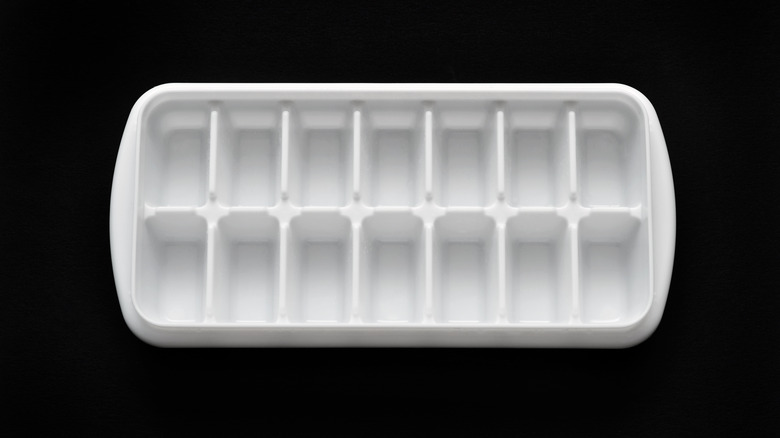The Best Way To Fill An Ice Cube Tray Was Right In Front Of Us All Along
If you don't have a refrigerator with a built-in ice maker, every so often, you'll have to fill an ice tray with water from the faucet. Then, you'll promptly place the tray of water in your freezer so that the water can freeze into ice cubes. But when collecting the water in the tray from your faucet, it can be tricky to fill each cell without spilling and splashing water everywhere. Well, struggle no more! The most efficient way to fill the tray without getting water all over your kitchen has been looking you in the face since you first got your hands on an ice tray. What is it? It's those small, flat areas between the molds in the tray.
By simply letting the water from your faucet run over the flat areas in between the molds on the ice tray, you will get an even distribution of water in the cells surrounding each flat area. No more moving the ice tray precisely from side to side, rocking it back and forth, or tilting the tray like a seesaw to get an even distribution of water to fill each cell. No more having to dry off your counter and walls from all the spatter. This truly is one of the amazing ice cube tray hacks that makes life easier.
How to properly fill an ice cube tray
One of the keys to this ice cube tray hack is making sure that the stream of water coming from your faucet isn't too strong because, if it is, the water may ricochet off the tray and splash everywhere. When you turn your water on, ensure it's a light stream. Take your ice tray and position one of the flat areas nearest the end of the tray under the running water. The water will smoothly fill the flat area's four surrounding cells.
Most ice cube trays come with 12, 14, or 16 cells that you can use to make ice cubes. Those trays also have several flat areas. You might think you should position each flat area under your running water to fill the entire tray, but you don't. If you keep the water streaming over a single flat area, the tray will become entirely filled. It may seem simple, but it's one of the genius ways to use your ice cube tray. Once you've filled your tray, you might want ice cubes as soon as possible. Well, certain ice cube trays will make ice cubes quicker than others.
Which is better: A plastic or stainless steel ice cube tray?
If you use a plastic tray for your ice cubes, you may find it takes longer to freeze. Plastic is an insulator, so it can quickly and easily trap heat. Thus, the insulating properties of a plastic ice cube tray can lengthen how long it takes for your ice cubes to freeze. Additionally, once you take your plastic ice cube tray out of the freezer, that insulation can cause the cubes to start melting.
Conversely, a stainless steel tray chills faster than plastic, gets colder than plastic, and sustains that cold temperature for longer. Thus, a stainless steel tray will speed up how quickly your ice cubes freeze and help keep them frozen longer once the tray is removed from the freezer. But, if you do eventually get a fridge with an ice maker, hold on to your ice tray. You can still use it for other things, such as making adorable mini pancakes, homemade ice cream, and even perfect homemade pizza rolls.


